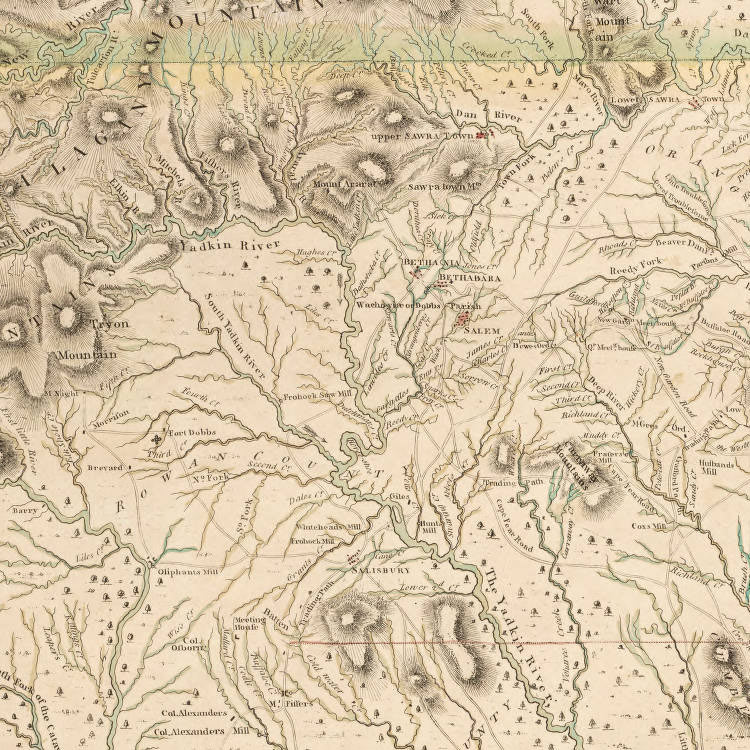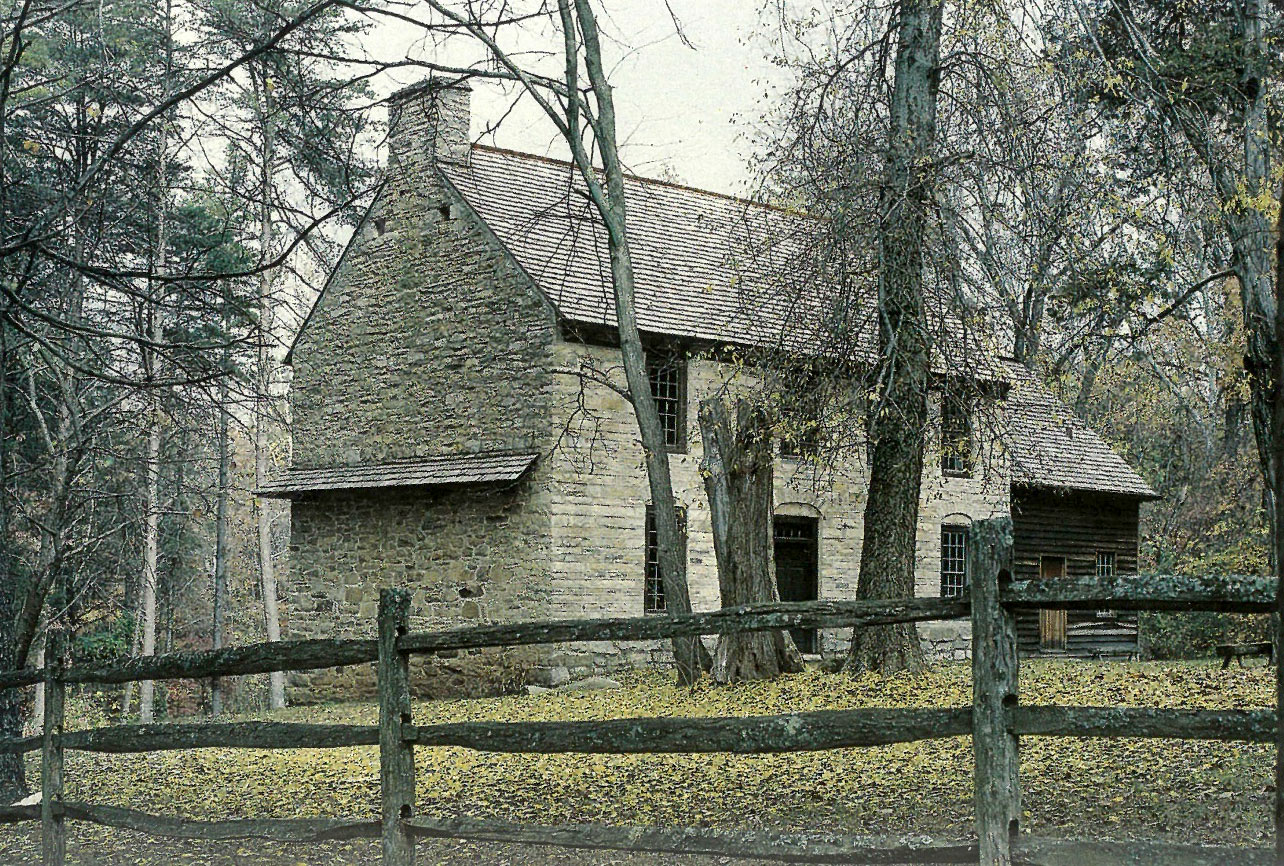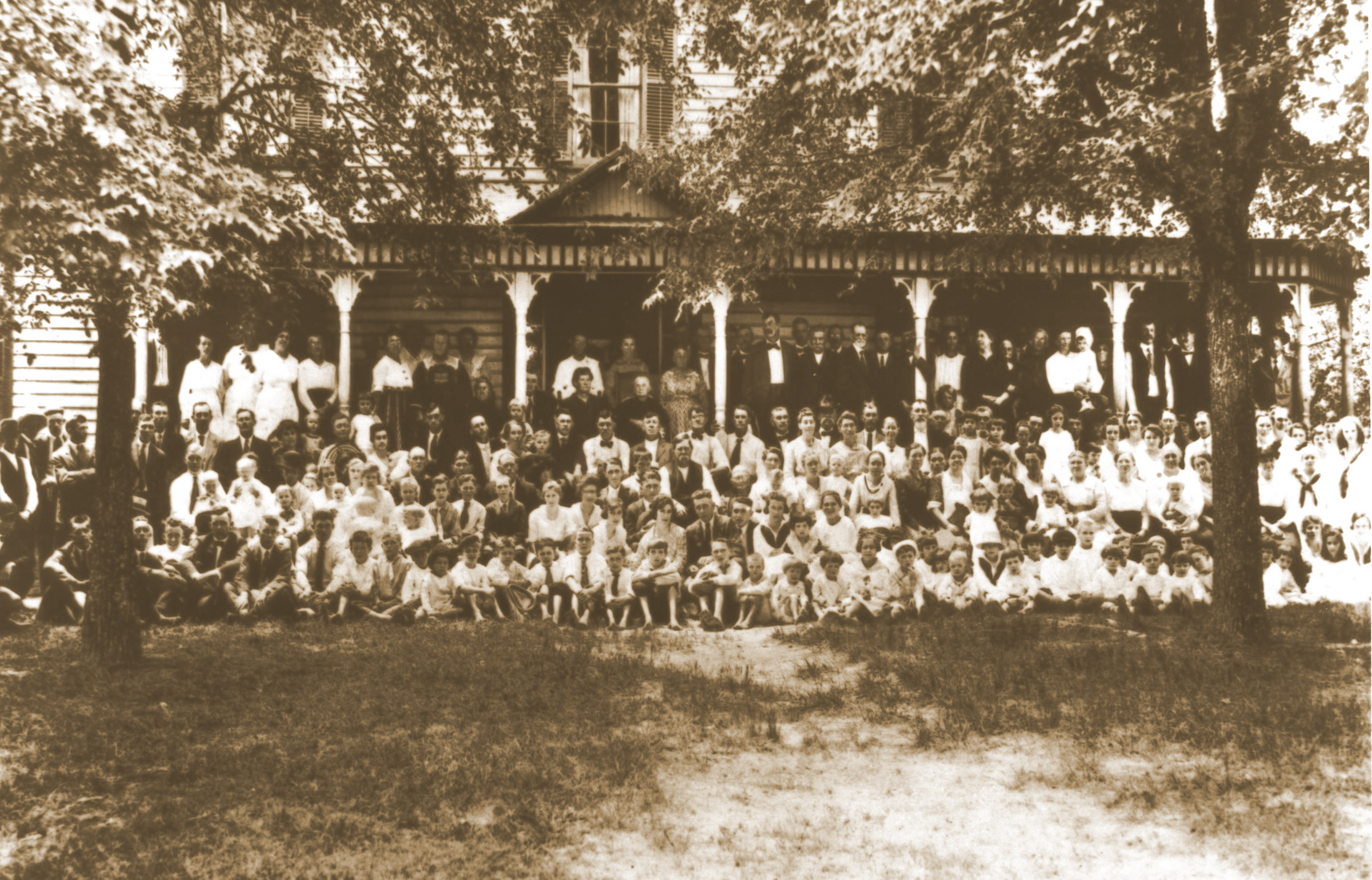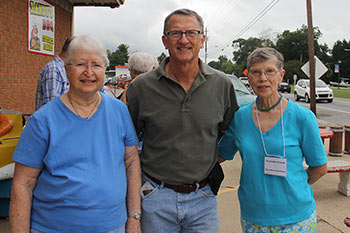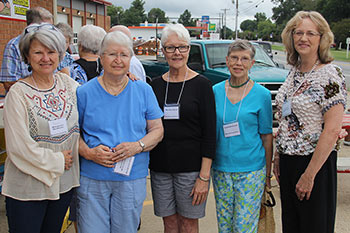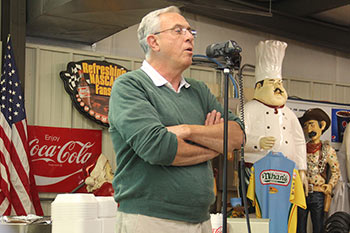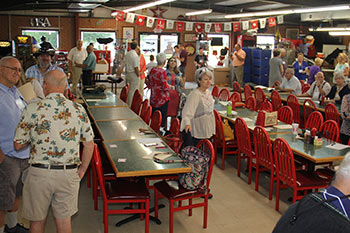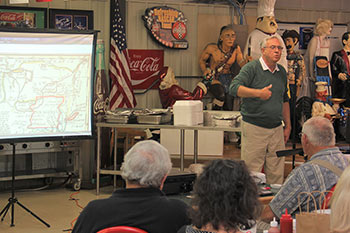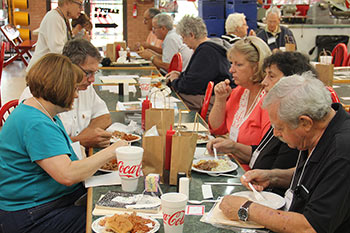Chapter 15
William (et al.) in Colonial Carolina
In 1755, William Lippard was fifty-six years old, not someone who would restart a life with the vigor, especially after tragedy, needed to grow his wealth and fulfill new ambitions. That seems to be the case for the rest of his life, so after some initial appearances on the public stage, he and Catherine retired to a small but prosperous farm, and lived well.
Why William and Catherine relocated to North Carolina was both personally and circumstantially logical. In the latter case, the newly formed Rowan County had already become a center for German migration south on the Great Wagon Road. So, as in Virginia, the Lippards had folks nearby who understand their tongues and customs. In the early years of the French and Indian War, Rowan extended through most of the western sections of the North Carolina colony, its uncultivated lands of prairies and advanced stages of hardwoods were highly attractive, and the price of land was essentially the payment of surveying and closing costs to officials of the Granville District.
It also seems that a familial logic was at play. William was following a son into the Carolina backcountry. We have long hoped to find William's son Robert somewhere in the south, but we've been just as long uncertain about the leading candidate: Robert Leeper, who lived in today's Gaston County. (A Leeper's Creek runs into the Catawba River.) Two recent discoveries have helped us think this could have been William and Catherine's child. Robert "Leopard" is the very first person in Rowan County to register a deed, this being the only time we can find that he used that name. Moreover, in another early record, Leeper is said to have been a resident along "Dutchman's" Creek, perhaps a precursor to naming the creek for him.
Significantly, we now think, Robert says he first gained a land grant in 1751, which would mean that he had claimed land in North Carolina before there is a record for William in Virginia. Could it be that Conrad's hint by leaving Wilhelm such a small inheritance in his will might indicate that he was feeling abandoned/left behind etc., connect to Robert's having already left by this date, 1751? We cannot tell, but it is interesting. There is also the factor that the Leepers(a spelling Robert may have adopted) and the Lippards apparently don't meet up in subsequent generations; maybe again suggesting some underlying tension going back to Pennsylvania.
(Also, we are more inclined to suggest that Leeper and Lippard could be the same name after the discovery of the Leeper Communes in the labor records of early modern Germany. e. And, there remains the unresolved connection to Leopards who settled in Edgefield, South Carolina. More on them below.)
At any rate, we learn that William is in Rowan County by the middle of 1756, perhaps a year after the Draper's Meadow incident. We have only recently figured this out, in a discovery of great genealogical significance for the whole Lippard story.
In 2019 Rhett Lippard of Troutman, while perusing the Web, found for sale a Superior Court summons issued to William and two other Germans. The trio were accused of forcefully entering the lands of Scots Irish settler William Brandon and cutting down some of Brandon's trees! They were ordered to appear in court in 1756.
Gary, who does North Carolina history, had never seen such a document in all his years reading way too many things in a multitude of counties. He had never heard of such a charge, although a bit of research suggested this type of thing was more common back in the British Isles where wood was at a premium. Why would Brandon, whose family, one of the very first to come to the area, make such a charge? It seems there was some kind of encounter.
Maybe William and his colleagues, Jacob Teeter—ancestor of the Teeter Brothers who were the forerunner of Harris-Teeter grocery market chain—and William Hartman, must have been cutting a lot of wood for Brandon to care. Maybe, Gary has speculated, they were wanting to make potash (though there is no record in Rowan or Cabarrus County of anything like that happening in the colonial period). However, since William was a known wood cutter in North Carolina, it lends a bit of credence to the idea that he had been Conrad's helper before he left Pennsylvania. Gary has also checked with other family histories and can find nothing like this having occurred anywhere. He also can find no record of what happened as a result. There is no further reference in what are otherwise complete court minutes.
The location of the incident was likely just to the south of Salisbury, not where William would live in Cabarrus County. Maybe, Gary speculates, William had yet to be settled there, and he was working at his trade. A brother of William Hartman shows up owning land adjacent to the Brandons. Maybe there was so much cutting that an altercation resulted. Maybe there were verbal or physical exchanges.
Or maybe William Lippard was in a post-traumatic state. The records are not good enough to conclude anything, but there is another sequence of records which are suggestive. In April 1757 William is tried in the Rowan County quarterly court. The record reads: "John Die vs. William Lippard. Slander case. Not guilty." (By the way, one of the presiding justices of the peace that day was Squire Boone, father of the famous frontiersman Daniel. The elder Boone lived where Mocksville is today.)
That is not the end of the story, however. Six months later the record shows: "John Dye vs. Jno. Lippard. Assn. . . . Not guilty". Gary assumes this is an attempted abbreviation for some kind of assault case. This time, there were witnesses listed: a "Mrs. Beffill" and Martin Beffill—who lived right outside the village of Salisbury—suggesting that the incident either occurred near their house, or perhaps was some kind of altercation in Salisbury itself. Significantly, evidence was also presented by Daniel Little, at one time the sheriff, and John Lewis Beard, the assumed leader of the German settlers in the county. Both lived in Salisbury.
The situation continued into the next year. In January 1758 there was "Jon Robinson v. John Die". In this case Die was the defendant, found guilty, and made to pay a fine of eleven shillings and nine pence. Evidence this time came from William Lippard, who may have been recounting what happened with him. Beard was again called to testify, as well.
(John Die/Dye, by the way, never appears in any other Rowan County record, so he may have been one of those marginal people who came and went in the colonial era, perhaps drifting to another place to repeat the same set of problems. Gary cannot find him anywhere else.)
Something was going on, here, and it sure seems like the Lippards were part of the earliest years of life in Salisbury. This advance in knowledge has helped us understand other new pieces of our genealogical puzzle. Natalie Pope, a Lippard cousin and officer in a historical archaeology company, several years ago found that it seemed that William originally tried to move to South Carolina, to what was Craven County in that period. A plat is filed in that colony's records that shows William had land surveyed in September 1756. The warrant was entered into the records a year later, September 1757. A close inspection showed that this plat is the same farm that he supposedly owned in Cabarrus County. The record says: "admeasured... land to William Leopard upon Duch Buffelo a branch of Rocky River in Craven County". Gary has concluded that William was one of several residents along "Dutch Buffalo" Creek to file deeds in South Carolina because they were unclear which colony controlled the area. At the time the lines between the two Carolinas had been finalized only to the Charlotte area, and it could have gone either way.
Another clue has been Harriet's find of a Christian "Leopard" serving with a South Carolina militia unit in the Anglo-Cherokee War of 1759. He was part of the Snow Campaign that went deep into the backcountry. The record shows that a private with that name served with under Colonel Richard Richardson, of the Camden District. Christian was likely William's son, and we will in future research try to find him living in South Carolina. We have never been able to link any Lippards to the "Leopard" family that lived in the vicinity of Edgefield, South Carolina, across the river from Augusta, after the America Revolution. This has become even more intriguing since the find of a Robert "Leopard" on the frontier of North Carolina, AND the finding that Liphards back in Germany made brick. The Leopards of Edgefield were part of the most famous potter's community in the antebellum South.
The South Carolina patent also helped us figure out where exactly on the creek William lived. In 2019, however, several new clues made it easy to pinpoint the spot. First, Gary found descriptions of small land transactions by William that involved other Germans, those named Cline, Speck, and Ritchie. Gary has long used a triangulation method that involves piecing together where the neighbors lived in relation to the principal subject. The warrant lists "Jacob's Richey's land of 20 chains" bounds William's. Gary had earlier been to the old Richey homestead in another project, so he knew where on the creek to look. Using Richey deeds, Gary found that William most likely lived where Dutch Buffalo Creek turns east and north for a while in its generally southward course.
Then we found the confirmation. The use of global tracking devices and GPS coordinates has encouraged techie-type genealogists to do more accurate land boundaries. This has been wonderfully accomplished by Lewis Simpson in Cabarrus County with very precise maps. With this help, we have pinpointed the location and size of William's farm, and we have learned more about him and his accomplishments in acquiring his land. It was located in the northern arc made by Dutch Buffalo Creek in the middle of Cabarrus County, about three miles northwest of Mt. Pleasant. As the accompanying maps show, it is off Cress Road, accessed today only by a private drive.
The new GPS maps show that William chose wisely where to live, just as he had in Virginia. He selected the widest swath of bottomland available along the creek. Today it is about a half mile wide, and could have been almost as wide then. It is some of the best land in the Dutch Side of Rowan and Cabarrus County. This is the same land that William listed in South Carolina, then had it granted to him in Anson County in June 24, 1762, from the governor of North Carolina. The recipients were Lippard, Paul Barringer, Michael Cline, and Henry Furr. (Interestingly, there is no corresponding record in Mecklenburg County, which may explain why William references his "deeded land" in his will. See below.)
This was a good deal, compared to the expense of staying in Faulkner Swamp. Land prices back there had been as high as fifteen pounds per 100 acres. Dobbs was asking ¼ pound for 100 acres.
That governor provides us with another way of complimenting William and his family in their decision making. Arthur Dobbs owned the whole area when William arrived; it was known to locals as the barony. In 1754 Dobbs had visited his lands where he found two different communities, one of Ulster Scots and another of Pennsylvania Dutch, squatting there. . . and prospering. He observed that the German families had "opened a wagon road all the way to Charlestown in South Carolina" to market their goods, which included indigo, beeswax, and the usual range of livestock products. He must have eaten with them, for he was pleased that they "made good butter and tolerable cheese," presumably for the long distance market as well as home consumption.
(Dobbs had other interesting things to say about the Scots-Irish women on his lands. They didn't wear enough petticoats; he did not specify if that was pleasing or displeasing. The elder Dobbs was married to a teenaged girl, and died a year later. The French and Indian War outpost Fort Dobbs, near Statesville, was built by him, and named in his honor.)
We have no good record of the Lippard fortunes for the decade of the 1760s, but it seems that William and Catherine did well enough that they could live comfortably during the American Revolution. However, it is most curious that William wrote his will in 1781, but seemed to have died a couple of years later. He announced he was "very sick and weak in body", but that announcement coincided with the worst months of the War for Independence. Had he been injured, or tortured? Was his demise imminent? Williams' neighbor, the Lutheran pastor Adolphus Nussman, was so tortured by Tories that those injuries eventually led to his death a decade later. There is a tradition that the Tories commanded by David Fanning, the notorious Loyalist commander, swept down Dutch Buffalo Creek in the summer of 1781, but no Lippard stories have been passed down to us about that. (We do know what John and his sons did during the war, but that is in the next chapter.)
Whatever happened, William's will and estate records show that he had spent the rest of his life comfortably on Dutch Buffalo Creek. And, he clearly had respectability the whole time. The two witnesses to his will are Michael Braun, the builder of the stone house in today's Granite Quarry, and Michael Goodman, one of the leading Germans of the area (despite the fact that the very proper effete Lutheran pastor Carl Storch referenced him as "Goodman the Jew" on one occasion.) And, the executors, Mark House and Jacob Slough, were yeomen farmers of similar wealth in the neighborhood. The man who provided the brandy for the estate sale was George Henry Barger, the Rowan sheriff whose descendants would reference as "Sir"—a mistaking of his status as a justice of the peace with some kind of European title. This too shows again how the Lippards had entered into the "middle class" of that day, as the Lippards and Bargers had intermarried.
William was not a leading landowner, at 188 acres, but his material lot otherwise was above the norm for the time. The will mentions the full range of colonial foodstuffs and food preparation habits; dried apples from an orchard and half dozen bee hives, indications of the larder available. His will also shows that he had built a second house more comfortable than the likely log cabin his family started in. That Catherine got to stay in "that part of my dwelling house . . . which is commonly called the new house" suggests this. The reference to "the fire room" might indicate a tiled German stove in the house; one is on display at Old Salem in Wachovia. The fact that there was a male slave—"one Nigoro" brought 150 pounds in the estate sale—is an indication that his wealth from the land had to have been substantial enough to afford what was a major cost. And, that status as a slaveholder put him in the upper fourth of North Carolina's German farmers in the period. Most likely he profited from the sale of grain for the local distilleries. There is also the likelihood that his meadow lands provided well for his livestock, since just up the creek is a leftover from the colonial period: an unplowed patch of land that blooms with prairie plants each spring. It still belongs to the descendent of one of William's neighbors.

The Suther Meadow, a surviving example of the old colonial prairie, is located just a couple of miles from the William Lippard homesite.
The entire will suggests a patriarch's strong desire to see his spouse well cared for, as well as, perhaps, the inability to let John, the presumed buyer of the property, to improvise in the care of his mother. John did sell the farm in 1792 "in behalf of the heirs of William Lippard"—Robert? Christian?—and it is possible she continued to live in the house. Catherina Elizabeth Neidhardt Lippard would live till July 1795. Her will is listed in the abstracts of records from Cabarrus County, but a copy has not been found.
What we know less about William is his ultimate decisions about faith and culture. While he had his children confirmed, back in Falkner Schamm, and while his son and grandchildren are involved in church, there is no record that William and Catherine belonged to any German church in the North Carolina backcountry, and there were four within walking distance of his house. It is most interesting that his will asked "to be buried in a decent Christian burial, at the discretion of my executors". What discretion could that have been? We also do not know where they were buried, although it is likely in either the older cemetery near St. John's Lutheran in today's Mt. Pleasant, or Lowerstone Reformed Church near today's Rockwell, where John had been a original trustee. (There is no evidence of a family cemetery found, and folks in Cabarrus have scoured their county in finding graves.) Both cemeteries are known to have had far more fieldstones than are there today. Catherine's death in 1795, when Pastor Carl Storch reported the news in his diary, suggests that she may well have had a connection to Organ Lutheran Church at that time. (This, by the way, is an indication that her family had become connected to Lutherans, a subject explored in the next chapter.)
William's and Catherine's death at the end of the American Revolution are the real watersheds of the great transitions that the Lippards went through in the century that went back to Conrad's birth and European upbringing. Certainly the wealth William had accumulated, as well as the prestige accrued to his sons and grandsons, and through marriage, his granddaughters, suggests that upward mobility --- is the heart of "the American success story", as expressed in Benjamin Franklin's autobiography. William's descendants take that story line outward and upward, as we shall see next.


